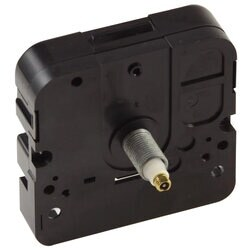This profile looks great. You want to share it with everyone?

Digital Clock Motors
User
Clock Motors and Obtaining one of the most from Them
SECTORES
About Digital Clock Motors
Clock electric motors are what control the performance of traditional timepieces. Modern clock motors ("motions" is the term generally used in the trade) ascertain their timing from the number of pulses given off by a quartz crystal (at a high and accurate powerful frequency) taking place over a particular period; via checking and subdivision (in software application) they can then derive instant angles of turning for each and every of the hands. Nevertheless, though timekeeping is one of the most essential capability of these devices, they can do a lot a lot more, exhibiting features ranging from customary to unique to distinctive.
Early clock electric motors functioned mechanically. Possible power in the form of coiled springs or hanging weights was converted into the kinetic energy of a revolving flywheel, the rate of which could be controlled with the coordinated mix of pendulum and escapement. By naturally readjusting the criteria of this combination (e.g., length of pendulum shaft) the clockmaker had the ability to accomplish a stable tick at the very accurate rate of one secondly.
In time the mechanical structures were supplanted by digital ones, less strained with troublesome components. Quartz crystals came to be the power source, giving off pulse trains at gradually exact regularities when voltage is related to them. Pulse matters could be gathered in electronic registers, and software transformed the pulse streams right into time markers of hours, mins, and seconds.
Some historic timepieces exhibited amazing impacts (along with conventional timekeeping) that were produced with painstaking and elaborate style work coupled with ingenious mechanical couplings. Such idiosyncrasies can be simulated with the modern digital clock motions in a relatively straightforward manner via software application. Yet it is likewise possible to achieve even greater impacts, nearly anything the creative imagination can dream up, due to the fact that programs is much more flexible than mechanical design.
We have actually all seen watches and various other type of wrist watches prolong ordinary timekeeping by revealing the phase of the moon, the day of the week, or the day of the month. Electronic motors do any of these and extra, including 24-hour cycles. Unique dials and added hands may be required, yet the software regulates all of it.
